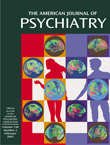One of the more intriguing facts emerging from millennial activities is that many time capsules are never uncovered, their quixotic gifts to a future age forgotten and perhaps paved over. Understanding Troubled Minds appears to have avoided this fate, its contents a well-meaning but anachronistic view of a psychiatry now decades old. Ostensibly a guide to mental illness and its treatment for the lay reader, the work is an iteration of an Australian medical school textbook that proudly endorses a biopsychosocial model in which biology is a mystical grab bag of chemicals, pictures, and promise. Depression is explained as a disorder of too few chemical messengers, schizophrenia as a disorder of too much, and panic and obsessive-compulsive disorders as involving “dysfunction of certain chemicals,” a conclusion “supported by the finding that only one class of antidepressants (the SSRIs) is effective for obsessional symptoms” (surely a surprise to the marketers of clomipramine).
A green and yellow magnetic resonance imaging scan is used as a vivid illustration and labeled as “showing different areas of the brain.” The fact that Tourette’s syndrome responds to antipsychotic drugs suggests that it is a disorder of brain function, according to the authors, while understanding the mechanism of action of lithium depends on “complex biochemical theories.” A similar hesitation, however, does not apply to the explication of psychological or social theories. The views of R.D. Laing are reinflated, and the contributions of Erving Goffman, Viktor Frankl, Albert Ellis, and Hans Eysenck remembered in perhaps too much detail. The most compelling and thoughtful chapters include one detailing a case history of Vincent van Gogh and another describing how to maintain good mental health. Illustrations are colorful and numerous but of questionable pertinence to the text, consisting for the most part of cartoons and examples of psychiatric art contributed by colleagues.
American readers who overlook the “down under” origin of the work may be bewildered by the admonition not to eat Vegemite while taking a monoamine oxidase inhibitor and by the absence of citalopram, bupropion, mirtazapine, and nefazodone from the list of available antidepressants, as well the linking of Leo Tolstoy and Pablo Picasso to Dame Mary Gilmore in a discussion of effective aging. American psychiatrists may be similarly surprised to learn that chlorpromazine is a mainstay of treatment in mania and by a discussion of the treatment of sexual dysfunction that omits sildenafil. These and other omissions, as well as problems in balance and timeliness, make this a difficult book to recommend to an American readership of patients and their families.

